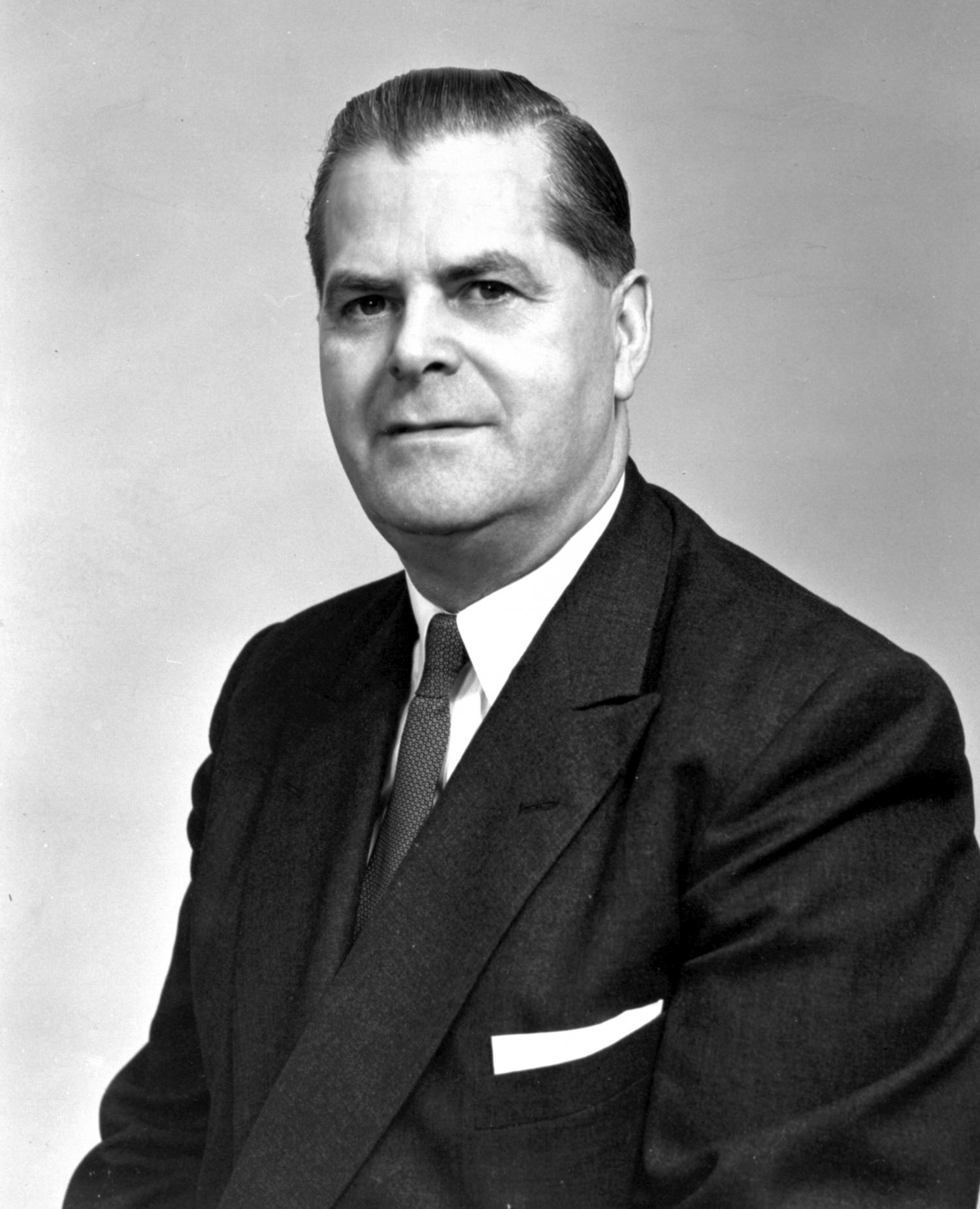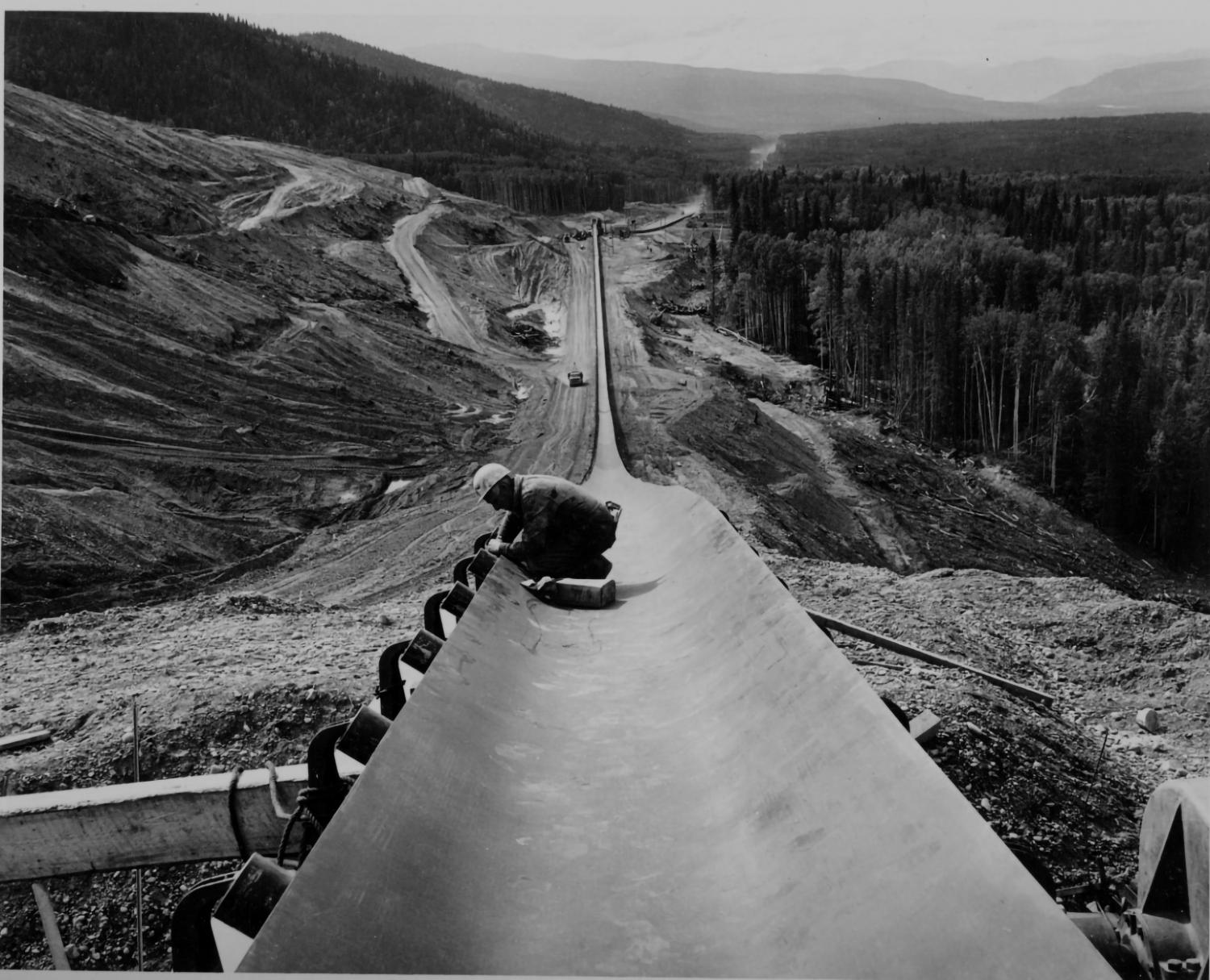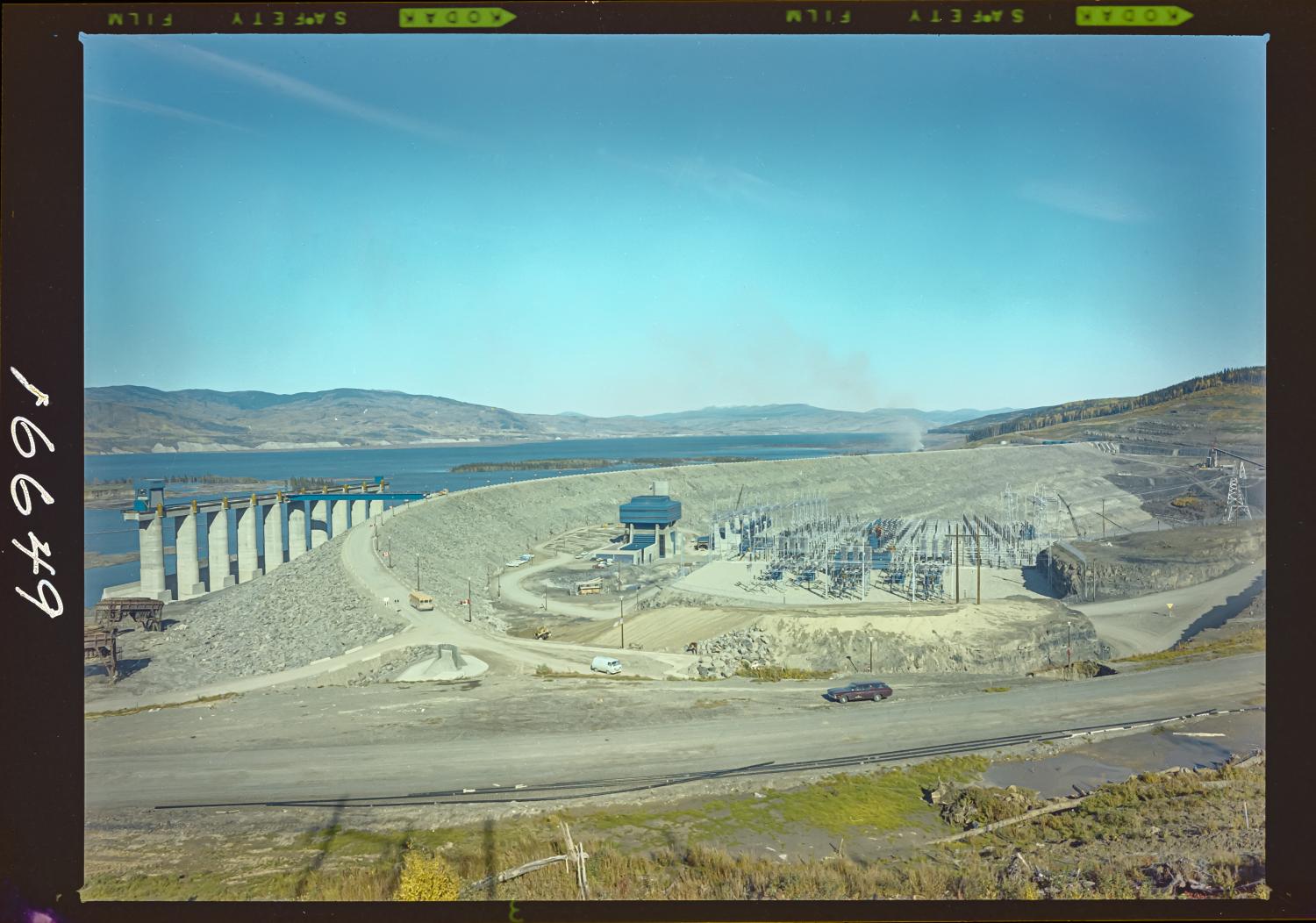W.A.C. Bennett Transforms B.C.
Longest-serving premier modernizes the province with infrastructure projects
Date: 1952
William Andrew Cecil Bennett, later nicknamed “Wacky,” came from humble beginnings. Born in a tiny New Brunswick town in 1900, Bennett came to British Columbia during the Great Depression in search of opportunity. Within a couple of decades, he had climbed to the top of B.C. politics. He remained premier for 20 years, transforming a rugged province dotted with company towns into a modern, interconnected powerhouse.
B.C.'s 25th premier entered politics after building a name for himself as a successful Okanagan businessman, operating a chain of hardware stores and a winery. After a failed bid to join the provincial legislature in 1937, Bennett won a seat as a B.C. Conservative four years later. However, it took more than ten rocky years — a failed federal election run, two unsuccessful attempts to lead the provincial Conservatives, and a move to the emerging Social Credit Party (Socreds) — before Bennett took the reins of the B.C. government.
When he became premier in 1952, much of B.C. remained largely cut off from the rest of the province, untouched by modern infrastructure. Vast swathes of the north and the Interior had no electricity, and outdated roads left some rural towns inaccessible during bad weather. Riding a booming economy and a wave of rural, Christian populism, Bennett sought to bring the hinterland into the modern era by dramatically improving transportation and expanding resource exploitation. His lofty plans often faced resistance — from the federal government, other premiers, business leaders, communities, the press — but Bennett almost always got his way.
His government oversaw the construction of new highways, bridges, tunnels and railways, as well as upgrades to older infrastructure. The once-abandoned Pacific Great Eastern Railway — previously dubbed "the railway from nowhere to nowhere" — began pushing further and further north. And though he presented himself as a fervent believer in free enterprise, Bennett didn’t always follow his own rhetoric. In 1958, he created BC Ferries, a Crown corporation, ultimately ending private ferry service and easing access to coastal communities.
Meanwhile, more mines, smelters and pulp mills sprang up, as did new oil and gas infrastructure. But perhaps what Bennett’s most known for is his ambitious Two-Rivers policy. He believed the provincial government could fuel further economic growth by harnessing the power of B.C.’s largest rivers and expanding access to cheap electricity. In 1961, Bennett nationalized the privately-run B.C. Electric Company and established BC Hydro, again ignoring his self-espoused free-market beliefs. The following years saw Bennett’s government build the largest dam in the Western world on the Peace River, plus three other dams along the Columbia River, all at the same time.
In 1972, Bennett lost the provincial election to NDP Leader Dave Barrett. He retired from politics a year later. Despite his achievements, the famed premier left behind a checkered legacy. Bennett’s hydroelectric megaprojects not only displaced people, including several Indigenous communities whose gravesites and ancestral territory were flooded, but they also ruined some of B.C.’s most fertile farmland. Business prospered during Bennett’s tenure, while labour unions lost power. Critics have also accused the premier of engaging in political patronage by catering to Socred strongholds and neglecting NDP ones. Nonetheless, Bennett left an indelible mark on B.C. and spawned an important political dynasty in the process. Two years after Bennett retired, his son Bill Bennett became premier.
Sources:
1. Barman, Jean. The West beyond the West: a History of British Columbia. University of Toronto Press, 2007.
2. Barrett, Tom. The BC Mega-Project Dream That Dwarfed All Others. The Tyee, 22 Apr. 2013, thetyee.ca/Life/2013/04/22/BC-Mega-Project-Dream/.
3. “Bennett's Dam Projects - Power to the Lower Mainland.” Building the Power: the Labourers' Union in British Columbia, by M. C. Warrior, Construction and Specialized Workers' Union, LiUNA Local 1611, 2016.
4. Blake, Donald E., et al. Federalism, Conservatism, and the Social Credit Party in B.C. BC Studies, Spring 1989, ojs.library.ubc.ca/index.php/bcstudies/article/download/1314/1357/.
5. Bondurant, Flint. BC Hydro. The Canadian Encyclopedia, 6 Feb. 2006, www.thecanadianencyclopedia.ca/en/article/bc-hydro.
6. Fraser, C. Gerald. W. A. C. Bennett Dies at Age 78; Ex‐Premier of British Columbia. The New York Times, 25 Feb. 1979, www.nytimes.com/1979/02/25/archives/wac-bennett-dies-at-age-78-expremier-of-british-columbia-stood-for.html.
7. “Hastings.” Provincial Archives of New Brunswick, Province of New Brunswick, archives.gnb.ca/exhibits/communities/Details.aspx?culture=en-CA&community=1688.
8. Hume, Stephen. Canada 150: W.A.C. Bennett Built B.C.'s Modern Economy, Forged a Political Dynasty. The Vancouver Sun, 23 Jan. 2017, vancouversun.com/news/local-news/canada-150-w-a-c-bennett-built-b-c-s-modern-economy-forged-a-political-dynasty.
9. Mackie, John. This Week in History: 1956 Wacky Bennett Squares off against the Vancouver Sun in a Raucous Provincial Election. The Vancouver Sun, 23 Sept. 2016, vancouversun.com/news/local-news/this-week-in-history-1956-wacky-bennett-squares-off-against-the-vancouver-sun-in-a-raucous-provincial-election.
10. “The Pacific Great Eastern Railway.” Golden Miles of History, Lillooet , lillooet.ca/Recreation-Activities/Golden-Miles-of-History/The-Pacific-Great-Eastern-Railway.aspx.
11. Peyton, Jonathan. Unbuilt Environments: Tracing Postwar Development in Northwest British Columbia. UBC Press, 2017.
12. “Roads and Highways.” Building the Power: the Labourers' Union in British Columbia, by M. C. Warrior, Construction and Specialized Workers' Union, LiUNA Local 1611, 2016.
13. Roy, Patricia E. W.A.C. Bennett. The Canadian Encyclopedia, 31 Oct. 2010, www.thecanadianencyclopedia.ca/en/article/william-andrew-cecil-bennett.
14. Tomblin, Stephen G. W.A.C. Bennett and Province-Building in British Columbia. B.C. Studies, Spring 1990, ojs.library.ubc.ca/index.php/bcstudies/article/download/1346/1389/5571.





